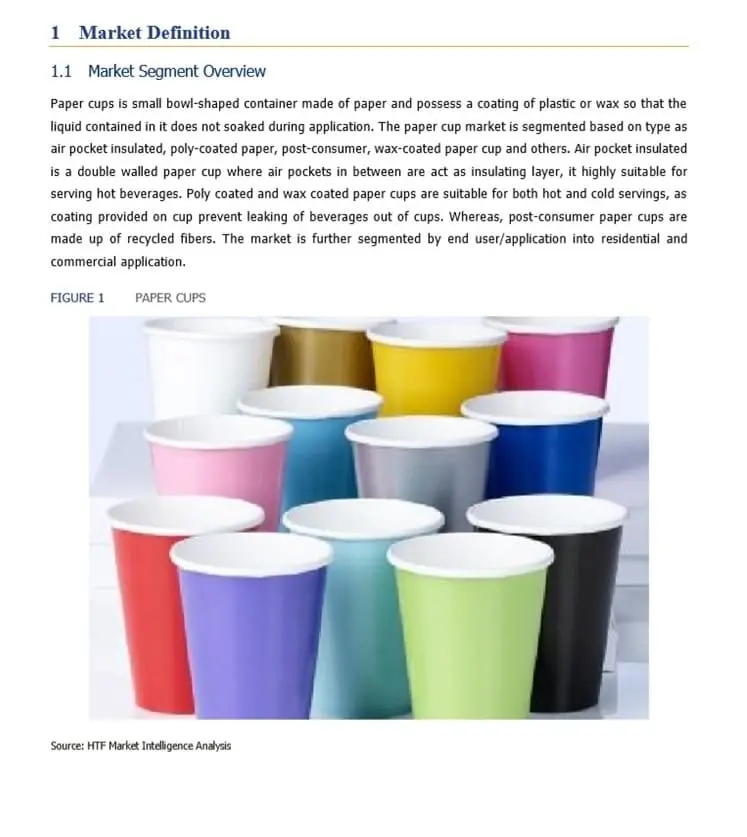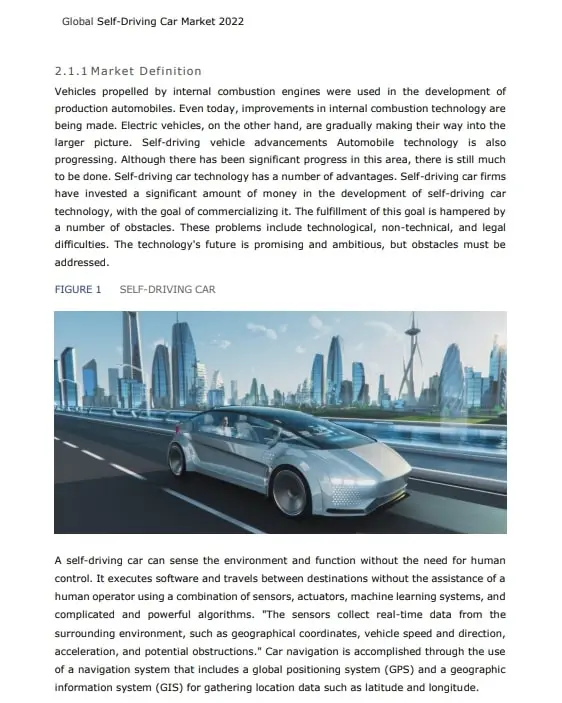- +1 551 333 1547
- +44 2070 979277
- live:skype_chat
About Enzyme Inhibitor
Enzyme Inhibition refers to a molecule which binds to an enzyme to inhibit the culture of harmful pathogens and enhance metabolism. Enzyme inhibitors are made up of protein and occur naturally. These substances abolish or reduce the rate of enzymes action. Enzymes play an essential role for life but in abnormally high enzymes can cause disease. Enzyme catalysis then helps to prevent control of the inflammatory response, infectious diseases, intervention in cell growth, treatment of hypertension and cell cycle and much more. The rise in the number of diseases such as hypertension cardiovascular diseases (CVD), infections, cancer and respiratory diseases has propelled the market for Enzymes Inhibition. | Attributes | Details |
|---|---|
| Study Period | 2018-2030 |
| Base Year | 2023 |
| Unit | Value (USD Million) |
Enzyme Inhibitor is a fragmented market due to the presence of various players. The players are focusing on strategic activities like partnerships, mergers, and acquisitions which will help them to sustain in the market and maintain their competitive edge. Analyst at AMA Research estimates that United States Vendors will contribute the maximum growth to Global Enzyme Inhibitor market throughout the forecasted period. Established and emerging Vendors should take a closer view at their existing organizations and reinvent traditional business and operating models to adapt to the future.
AstraZeneca (United Kingdom), Merck & Co. (United States), Novartis (Switzerland), Pfizer Inc. (United States), Roche-Genentech (United States), Abbott Laboratories (United States), Bayer (Germany) and Johnson and Johnson (United States) are some of the key players that are part of study coverage. Additionally, the Vendors which are also part of the research coverage are Ranbaxy Laboratories (India) and Takeda Pharmaceuticals (Japan).
Segmentation Overview
AMA Research has segmented the market of Global Enzyme Inhibitor market by Type (Reversible Inhibitor and Irreversible Inhibitor), Application (Pesticide Synthesis, Drug Development, Diagnostic Agent and Others) and Region. On the basis of geography, the market of Enzyme Inhibitor has been segmented into South America (Brazil, Argentina, Rest of South America), Asia Pacific (China, Japan, India, South Korea, Taiwan, Australia, Rest of Asia-Pacific), Europe (Germany, France, Italy, United Kingdom, Netherlands, Rest of Europe), MEA (Middle East, Africa), North America (United States, Canada, Mexico). If we see Market by End Users, the sub-segment i.e. Agrochemical will boost the Enzyme Inhibitor market. Additionally, the rising demand from SMEs and various industry verticals gives enough cushion to market growth. If we see Market by Disease Indications , the sub-segment i.e. Arthritis will boost the Enzyme Inhibitor market. Additionally, the rising demand from SMEs and various industry verticals gives enough cushion to market growth.
Influencing Trend:
Outsourcing Manufacturing Process to Contract Manufacturing OrganizationsMarket Growth Drivers:
Rise In Demand For Enzyme Inhibitors as It Acts As Diagnostic, Agents To Detect Various Diseases, Increase In Number of Geriatric Population and Rising Per Capita Expenditure on HealthcareChallenges:
Basic Presumptions Of Enzyme Reactions And Addition Of New Factors Further Complicate The Calculation Of Reactor OutcomeRestraints:
Patent Expirations of Blockbuster Enzyme Inhibitors and Stringent Regulatory Norms Increases the Cost As Well As Launch Period of New DrugsOpportunities:
Research And Development Of Novel And Advanced Inhibitors and Increasing Demand for Effective DrugsMarket Leaders and their expansionary development strategies
In January 2023, UK pharma major AstraZeneca acquired USA-based clinical stage biotech CinCor Pharma, in deal that could cost it as much as USD 1.8 billion.In October 2019, The U.S. Food and Drug Administration approved Trikafta (elexacaftor/ivacaftor/tezacaftor), the first triple combination therapy available to treat patients with the most common cystic fibrosis mutation.
Key Target Audience
Agencies and authorities such as the United States Department of Agriculture (USDA), the Food and Agriculture Organization (FAO), and the Environmental Protection Agency (EPA), Government regulatory bodies and NGOs and End usersAbout Approach
To evaluate and validate the market size various sources including primary and secondary analysis is utilized. AMA Research follows regulatory standards such as NAICS/SIC/ICB/TRCB, to have a better understanding of the market. The market study is conducted on basis of more than 200 companies dealing in the market regional as well as global areas with the purpose to understand the companies positioning regarding the market value, volume, and their market share for regional as well as global. Further to bring relevance specific to any niche market we set and apply a number of criteria like Geographic Footprints, Regional Segments of Revenue, Operational Centres, etc. The next step is to finalize a team (In-House + Data Agencies) who then starts collecting C & D level executives and profiles, Industry experts, Opinion leaders, etc., and work towards appointment generation.
The primary research is performed by taking the interviews of executives of various companies dealing in the market as well as using the survey reports, research institute, and latest research reports. Meanwhile, the analyst team keeps preparing a set of questionnaires, and after getting the appointee list; the target audience is then tapped and segregated with various mediums and channels that are feasible for making connections that including email communication, telephonic, skype, LinkedIn Group & InMail, Community Forums, Community Forums, open Survey, SurveyMonkey, etc.
Report Objectives / Segmentation Covered
By Type
- Reversible Inhibitor
- Irreversible Inhibitor
By Application
- Pesticide Synthesis
- Drug Development
- Diagnostic Agent
- Others
By End Users
- Agrochemical
- Pharmaceutical
- Biotechnology
- Food & Beverage
- Other End Users
By Disease Indications
- Arthritis
- Cardiovascular Disease
- Chronic Obstructive Pulmonary Disorders
- Gastrointestinal Disorders
- Inflammatory Diseases
- Other Diseases
By Regions
- South America
- Brazil
- Argentina
- Rest of South America
- Asia Pacific
- China
- Japan
- India
- South Korea
- Taiwan
- Australia
- Rest of Asia-Pacific
- Europe
- Germany
- France
- Italy
- United Kingdom
- Netherlands
- Rest of Europe
- MEA
- Middle East
- Africa
- North America
- United States
- Canada
- Mexico
- 1. Market Overview
- 1.1. Introduction
- 1.2. Scope/Objective of the Study
- 1.2.1. Research Objective
- 2. Executive Summary
- 2.1. Introduction
- 3. Market Dynamics
- 3.1. Introduction
- 3.2. Market Drivers
- 3.2.1. Rise In Demand For Enzyme Inhibitors as It Acts As Diagnostic
- 3.2.2. Agents To Detect Various Diseases
- 3.2.3. Increase In Number of Geriatric Population
- 3.2.4. Rising Per Capita Expenditure on Healthcare
- 3.3. Market Challenges
- 3.3.1. Basic Presumptions Of Enzyme Reactions And Addition Of New Factors Further Complicate The Calculation Of Reactor Outcome
- 3.4. Market Trends
- 3.4.1. Outsourcing Manufacturing Process to Contract Manufacturing Organizations
- 4. Market Factor Analysis
- 4.1. Porters Five Forces
- 4.2. Supply/Value Chain
- 4.3. PESTEL analysis
- 5. Global Enzyme Inhibitor, by Type, Application, End Users, Disease Indications and Region (value) (2018-2023)
- 5.1. Introduction
- 6. Enzyme Inhibitor: Manufacturers/Players Analysis
- 6.1. Company Profile
- 6.1.1. AstraZeneca (United Kingdom)
- 6.1.1.1. Business Overview
- 6.1.1.2. Products/Services Offerings
- 6.1.1.3. Financial Analysis
- 6.1.1.4. SWOT Analysis
- 6.1.2. Merck & Co. (United States)
- 6.1.2.1. Business Overview
- 6.1.2.2. Products/Services Offerings
- 6.1.2.3. Financial Analysis
- 6.1.2.4. SWOT Analysis
- 6.1.3. Novartis (Switzerland)
- 6.1.3.1. Business Overview
- 6.1.3.2. Products/Services Offerings
- 6.1.3.3. Financial Analysis
- 6.1.3.4. SWOT Analysis
- 6.1.4. Pfizer Inc. (United States)
- 6.1.4.1. Business Overview
- 6.1.4.2. Products/Services Offerings
- 6.1.4.3. Financial Analysis
- 6.1.4.4. SWOT Analysis
- 6.1.5. Roche-Genentech (United States)
- 6.1.5.1. Business Overview
- 6.1.5.2. Products/Services Offerings
- 6.1.5.3. Financial Analysis
- 6.1.5.4. SWOT Analysis
- 6.1.6. Abbott Laboratories (United States)
- 6.1.6.1. Business Overview
- 6.1.6.2. Products/Services Offerings
- 6.1.6.3. Financial Analysis
- 6.1.6.4. SWOT Analysis
- 6.1.7. Bayer (Germany)
- 6.1.7.1. Business Overview
- 6.1.7.2. Products/Services Offerings
- 6.1.7.3. Financial Analysis
- 6.1.7.4. SWOT Analysis
- 6.1.8. Johnson and Johnson (United States)
- 6.1.8.1. Business Overview
- 6.1.8.2. Products/Services Offerings
- 6.1.8.3. Financial Analysis
- 6.1.8.4. SWOT Analysis
- 6.1.1. AstraZeneca (United Kingdom)
- 6.1. Company Profile
- 7. Global Enzyme Inhibitor Sale, by Type, Application, End Users, Disease Indications and Region (value) (2025-2030)
- 7.1. Introduction
- 8. Appendix
- 8.1. Acronyms
- 9. Methodology and Data Source
- 9.1. Methodology/Research Approach
- 9.1.1. Research Programs/Design
- 9.1.2. Market Size Estimation
- 9.1.3. Market Breakdown and Data Triangulation
- 9.2. Data Source
- 9.2.1. Secondary Sources
- 9.2.2. Primary Sources
- 9.3. Disclaimer
- 9.1. Methodology/Research Approach
List of Tables
- Table 1. Company Basic Information, Sales Area and Its Competitors
- Table 2. Company Basic Information, Sales Area and Its Competitors
- Table 3. Company Basic Information, Sales Area and Its Competitors
- Table 4. Company Basic Information, Sales Area and Its Competitors
- Table 5. Company Basic Information, Sales Area and Its Competitors
- Table 6. Company Basic Information, Sales Area and Its Competitors
- Table 7. Company Basic Information, Sales Area and Its Competitors
- Table 8. Company Basic Information, Sales Area and Its Competitors
- Table 9. Research Programs/Design for This Report
- Table 10. Key Data Information from Secondary Sources
- Table 11. Key Data Information from Primary Sources
List of Figures
- Figure 1. Porters Five Forces
- Figure 2. Supply/Value Chain
- Figure 3. PESTEL analysis
- Figure 4. AstraZeneca (United Kingdom) Revenue, Net Income and Gross profit
- Figure 5. AstraZeneca (United Kingdom) Revenue: by Geography 2023
- Figure 6. Merck & Co. (United States) Revenue, Net Income and Gross profit
- Figure 7. Merck & Co. (United States) Revenue: by Geography 2023
- Figure 8. Novartis (Switzerland) Revenue, Net Income and Gross profit
- Figure 9. Novartis (Switzerland) Revenue: by Geography 2023
- Figure 10. Pfizer Inc. (United States) Revenue, Net Income and Gross profit
- Figure 11. Pfizer Inc. (United States) Revenue: by Geography 2023
- Figure 12. Roche-Genentech (United States) Revenue, Net Income and Gross profit
- Figure 13. Roche-Genentech (United States) Revenue: by Geography 2023
- Figure 14. Abbott Laboratories (United States) Revenue, Net Income and Gross profit
- Figure 15. Abbott Laboratories (United States) Revenue: by Geography 2023
- Figure 16. Bayer (Germany) Revenue, Net Income and Gross profit
- Figure 17. Bayer (Germany) Revenue: by Geography 2023
- Figure 18. Johnson and Johnson (United States) Revenue, Net Income and Gross profit
- Figure 19. Johnson and Johnson (United States) Revenue: by Geography 2023
List of companies from research coverage that are profiled in the study
- AstraZeneca (United Kingdom)
- Merck & Co. (United States)
- Novartis (Switzerland)
- Pfizer Inc. (United States)
- Roche-Genentech (United States)
- Abbott Laboratories (United States)
- Bayer (Germany)
- Johnson and Johnson (United States)
Additional players considered in the study are as follows:
Ranbaxy Laboratories (India)
,
Takeda Pharmaceuticals (Japan)
Select User Access Type
Key Highlights of Report
Jan 2024
205 Pages
53 Tables
Base Year: 2023
Coverage: 15+ Companies; 18 Countries
Request Sample Pages
Budget constraints? Get in touch with us for special pricing
Check Discount NowTalk to Our Experts
Want to Customize Study?
"We employ Market statistics, Industry benchmarking, Patent analysis, and Technological Insights to derive requirements and provide customize scope of work."
Frequently Asked Questions (FAQ):
The standard version of the report profiles players such as AstraZeneca (United Kingdom), Merck & Co. (United States), Novartis (Switzerland), Pfizer Inc. (United States), Roche-Genentech (United States), Abbott Laboratories (United States), Bayer (Germany) and Johnson and Johnson (United States) etc.
The Study can be customized subject to feasibility and data availability. Please connect with our sales representative for further information.
"Outsourcing Manufacturing Process to Contract Manufacturing Organizations" is seen as one of major influencing trends for Enzyme Inhibitor Market during projected period 2023-2030.
The Enzyme Inhibitor market study includes a random mix of players, including both market leaders and some top growing emerging players. Connect with our sales executive to get a complete company list in our research coverage.



